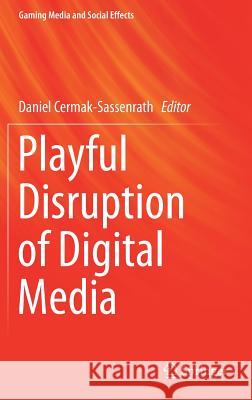Playful Disruption of Digital Media » książka
topmenu
Playful Disruption of Digital Media
ISBN-13: 9789811018893 / Angielski / Twarda / 2018 / 310 str.
Kategorie:
Kategorie BISAC:
Wydawca:
Springer
Seria wydawnicza:
Język:
Angielski
ISBN-13:
9789811018893
Rok wydania:
2018
Wydanie:
2018
Numer serii:
000471474
Ilość stron:
310
Waga:
0.66 kg
Wymiary:
23.5 x 15.5
Oprawa:
Twarda
Wolumenów:
01
Dodatkowe informacje:
Wydanie ilustrowane











